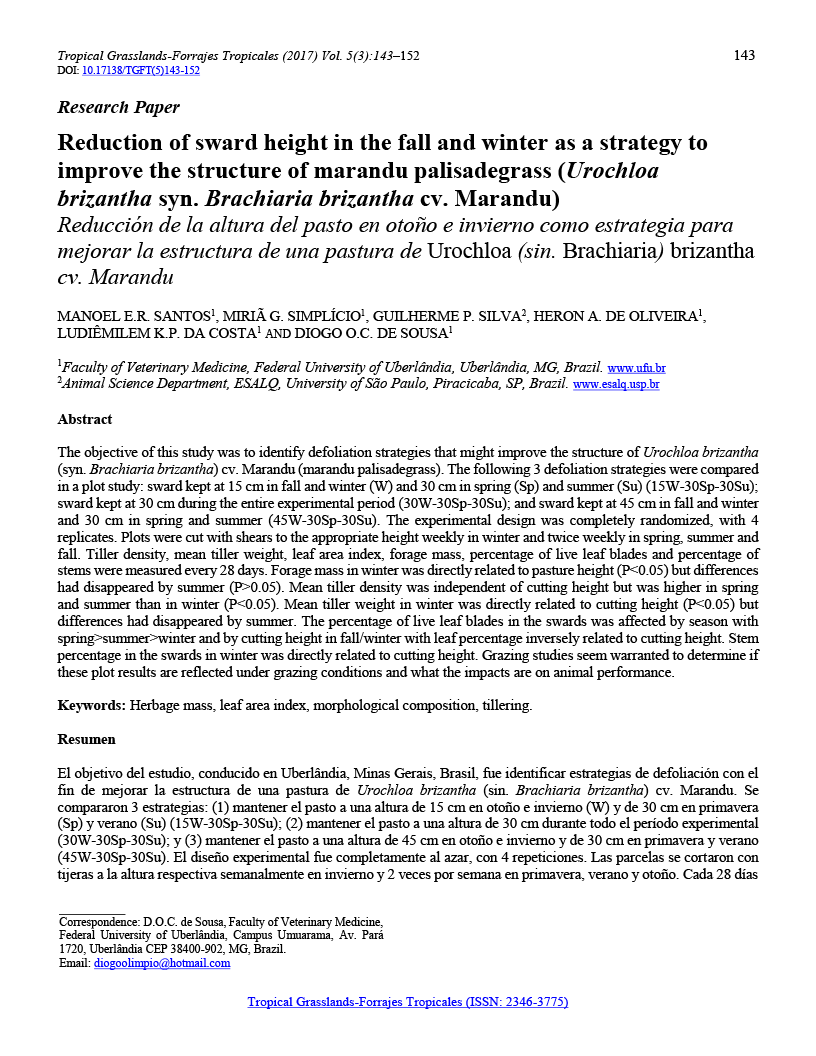Reduction of sward height in the fall and winter as a strategy to improve the structure of marandu palisadegrass (<i>Urochloa brizantha</i> syn. <i>Brachiaria brizantha</i> cv. Marandu)
DOI:
https://doi.org/10.17138/tgft(5)143-152Abstract
The objective of this study was to identify defoliation strategies that might improve the structure of Urochloa brizantha (syn. Brachiaria brizantha) cv. Marandu (marandu palisadegrass). The following 3 defoliation strategies were compared in a plot study: sward kept at 15 cm in fall and winter (W) and 30 cm in spring (Sp) and summer (Su) (15W-30Sp-30Su); sward kept at 30 cm during the entire experimental period (30W-30Sp-30Su); and sward kept at 45 cm in fall and winter and 30 cm in spring and summer (45W-30Sp-30Su). The experimental design was completely randomized, with 4 replicates. Plots were cut with shears to the appropriate height weekly in winter and twice weekly in spring, summer and fall. Tiller density, mean tiller weight, leaf area index, forage mass, percentage of live leaf blades and percentage of stems were measured every 28 days. Forage mass in winter was directly related to pasture height (P<0.05) but differences had disappeared by summer (P>0.05). Mean tiller density was independent of cutting height but was higher in spring and summer than in winter (P<0.05). Mean tiller weight in winter was directly related to cutting height (P<0.05) but differences had disappeared by summer. The percentage of live leaf blades in the swards was affected by season with spring>summer>winter and by cutting height in fall/winter with leaf percentage inversely related to cutting height. Stem percentage in the swards in winter was directly related to cutting height. Grazing studies seem warranted to determine if these plot results are reflected under grazing conditions and what the impacts are on animal performance.




